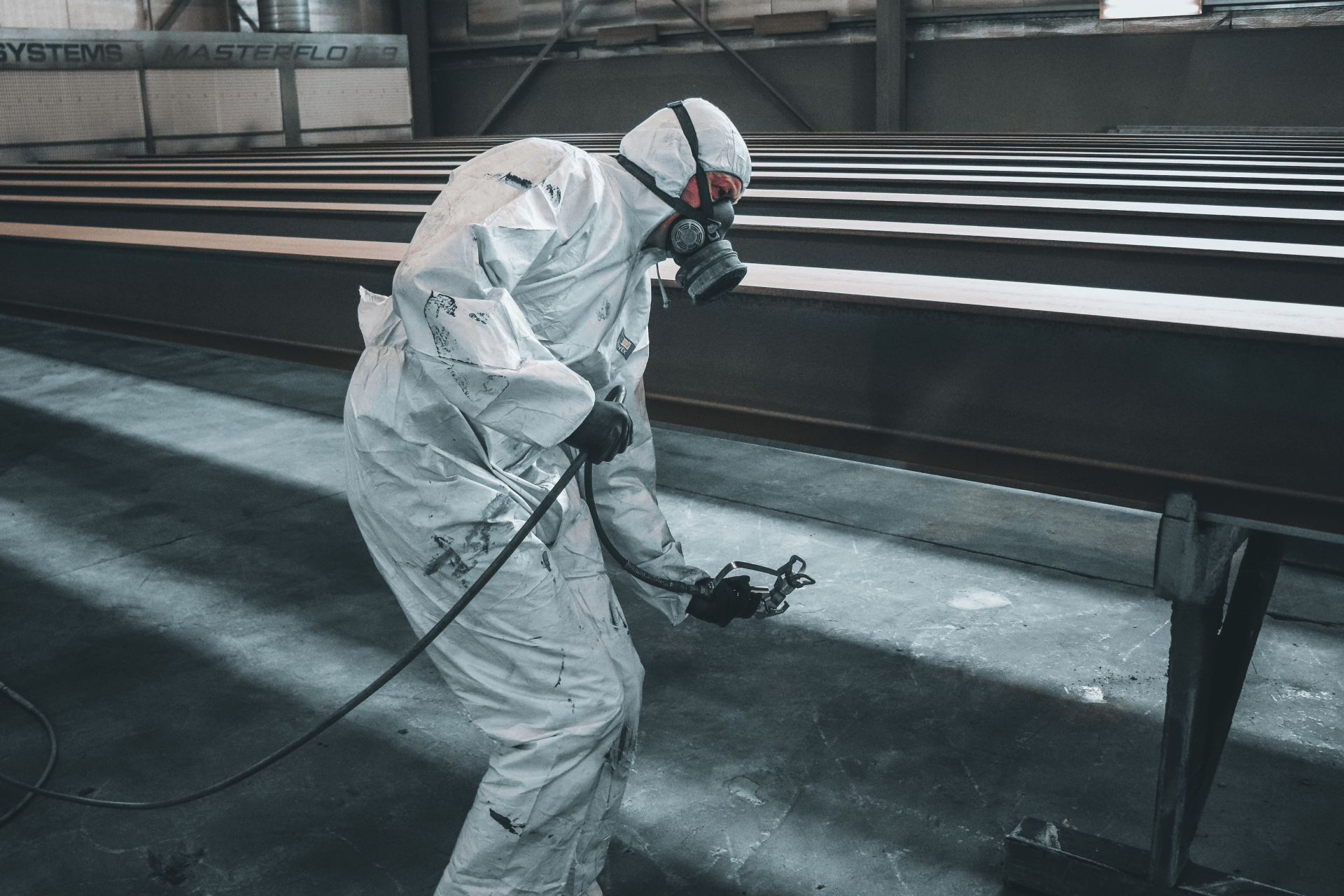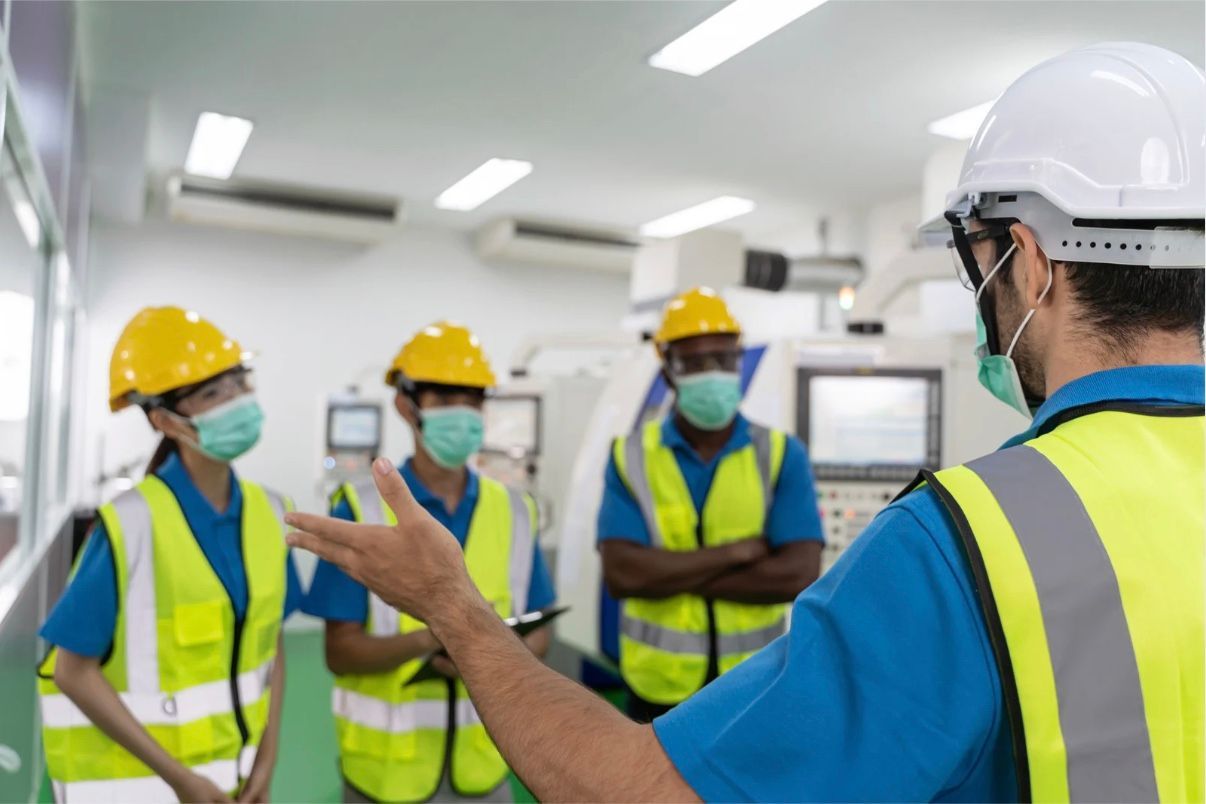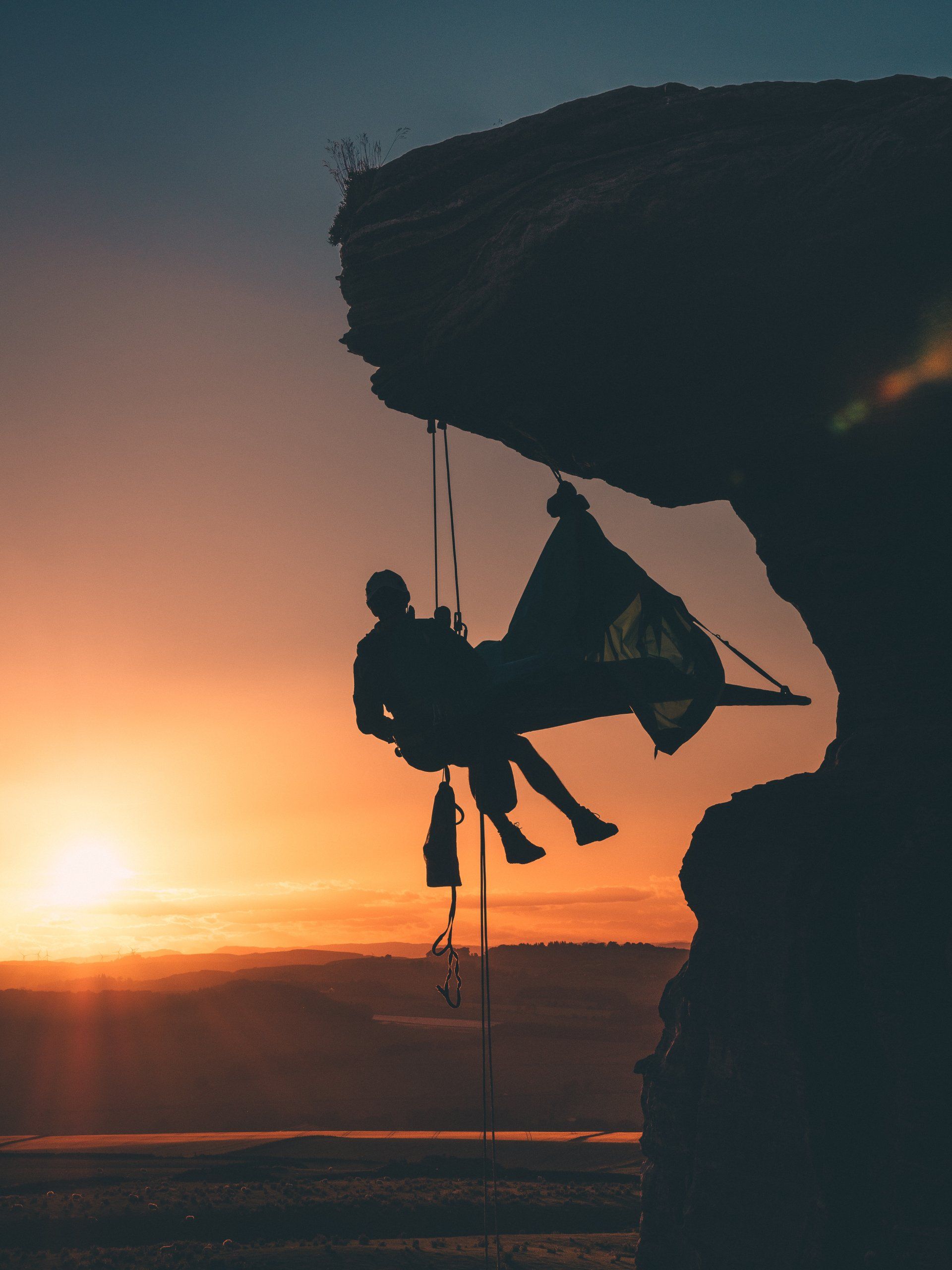IRATA Level 2 Training: The Complete Guide to Advanced Rope Access

IRATA Level 2 Training: The Complete Guide to Rope Access Level 2
Already achieved your IRATA Level 1 and logged your hours? This in-depth guide explains everything you need to know about IRATA Level 2 training - from prerequisites and training content to assessment, revalidation, and the career opportunities it unlocks.
What is IRATA Level 2 training and why it matters?
IRATA Level 2 training is where rope access work starts to feel advanced. At this stage, you’ll move beyond the basics of manoeuvring and equipment handling into complex rigging and rescue operations.
While rope access Level 1 technicians focus on safe movement under supervision, IRATA Level 2's take on responsibilities that demand deeper judgement. You’ll be expected to set up rope systems, carry out demanding rescues, and support the planning of safe systems of work.
Employers see this qualification as proof that you can handle pressure, think critically, and play a vital role on projects ranging from offshore rigs to high-rise construction.
Who should take IRATA Level 2 training?
If you’re serious about rope access as a career, this is your natural next step. IRATA Level 2 training is ideal for:
- Technicians who have gained solid experience at IRATA Rope Access Level 1 and want to expand their scope
- Workers looking to take on higher-paying roles that demand more responsibility
- Tradespeople such as NDT inspectors, painters, riggers, and electricians who need advanced rope access to apply their skills in complex settings
- Those aiming for IRATA Level 3 supervisor status, since Level 2 is a required stepping stone
Put simply: if Level 1 got you on the ropes, Level 2 gives you the confidence to operate in more challenging environments.
IRATA Level 2 Prerequisites: Experience and Eligibility
Progressing to this stage requires proven experience. To enrol, you must:
- Be at least 18 years old
- Hold a current Level 1 certificate (not expired)
- Have logged a minimum of 1,000 rope hours over 12 months at Level 1
- Present a logbook signed off by supervising Level 3s
- Be medically fit and able to perform demanding rope access tasks
These prerequisites ensure that only technicians with genuine on-site experience can attempt IRATA Level 2, protecting both the integrity of the certification and safety on future projects.
Once you meet these criteria, you’re ready to tackle the training week.
IRATA Level 2 training: How the 6-day Course is Structured
At Dangle Academy, we run six days of IRATA level 2 training to maximise rope time. Candidates benefit from five days of practice and coaching which is unique to Dangle across Ireland & Northern Ireland, before sitting an independent IRATA assessment on day six at our Belfast Academy.
Instead of just listing the schedule, here’s how the week flows:
Day 1: Refresh and Reset
The first day consolidates everything from Level 1 - knots, basic manoeuvres, and safety checks. It’s about resetting your foundations, so the advanced skills build on solid ground.
Day 2: Advanced Rigging
Here you’ll learn how to construct Y-hangs, build twin rope systems, and manage complex anchor setups. Realistic scenarios introduce deviations, re-belays, and redirects skills you’ll need on sites with obstacles or unusual structures.
Day 3: Rescue Techniques (Part 1)
The pace increases with rescues such as pick-offs and counterbalance systems. These techniques prepare you for scenarios where a teammate has become incapacitated.
Day 4: Rescue Techniques (Part 2)
More demanding rescues are introduced, including those through deviations and rebelays. You’ll practise transitions from vertical to horizontal rescues, learning to adapt techniques under pressure.
Day 5: Consolidation and Mock Assessment
By this point, the training feels like the real thing. You’ll run through full scenarios under assessment conditions, giving you feedback and confidence before the actual test.
Day 6: Independent Assessment
An IRATA Assessor, completely separate from your trainer, evaluates your performance. Expect to demonstrate rigging systems, execute advanced rescues, and answer written theory questions on planning, safety, and supervision.
This longer format means you’ll never feel rushed—every technique is practised repeatedly before you face assessment.
IRATA Level 2 syllabus: What You Will Learn
The syllabus is designed to push you further than Level 1. Key areas include:
- Rigging: setting up Y-hangs, complex anchors, and tensioned rope systems
- Hauling: building mechanical advantage systems for controlled load lifting
- Rescues: pick-offs, counterbalance rescues, and evacuations through deviations and rebelays
- Team operations: working efficiently with other rope techs under Level 3 supervision
- Safety theory: risk assessments, method statements, and compliance with the IRATA ICoP
Every IRATA Level 2 training candidate must also re-demonstrate their Level 1 skills to prove competence hasn’t slipped.
IRATA Level 2 Assessment: What To Expect
Assessment day can feel intense, but with five days of preparation, you’ll be ready. The IRATA Assessor will ask you to:
- Rig a variety of rope systems from scratch
- Carry out complex rescues with precision and safety
- Show correct use of back-up devices, connectors, and edge protection
- Complete a short written paper covering theory and safe systems of work
Pass, and your certificate, ID card, and logbook entry will confirm your progression to IRATA rope access level 2.
IRATA Level 2 Certification Validity and Revalidation
- Valid for three years
- Must be revalidated before expiry (either at Level 2 or Level 3)
- If you’ve been away from rope access for 180+ days, you’ll need refresher training
This cycle ensures technicians remain current and competent.
Progression after IRATA Level 2: Moving to Level 3
For those aiming at supervisory roles, Level 3 is the next target. To get there you’ll need:
- A current Level 2 certificate
- 1,000 logged hours and 12 months of IRATA Level 2 experience
- First aid certification
- Successful training and assessment at supervisory level
This progression pathway keeps the rope access industry structured, safe, and consistent worldwide.
Career Opportunities after IRATA Level 2 training
Graduating from IRATA Level 2 training opens up far more complex and higher-paying projects. For example:
- In oil and gas, you might take on rope-based rigging offshore, supporting heavy inspections and maintenance.
- In wind energy, Rope access Level 2's are trusted with advanced blade repairs and installation tasks.
- In construction, you could be tasked with façade installations or bridge rigging that require advanced rope techniques.
- In geotechnical work, your role may include slope stabilisation and heavy rescue responsibilities.
- In telecoms, you’ll manage antenna installations and tower rigging where advanced system setups are required.
Employers often see IRATA Level 2 training as the “sweet spot” - someone capable of handling the tough tasks, but not yet carrying the supervisory responsibility of a IRATA Level 3.
What Employers look for in new Level 2 technicians
Employers want more than just a certificate. They look for:
- A well-kept logbook showing varied experience
- Strong teamwork and communication skills
- Confidence with advanced rescues
- Trade tickets (e.g. NDT, coatings, rigging) that complement rope access
- Reliability and a strong safety culture
Bringing both rope access skills and trade qualifications makes you an invaluable hire.
How to prepare for IRATA Level 2 training
Success at this level comes from preparation:
- Revise your IRATA Level 1 rope access techniques and knot work
- Check that your logbook is up to date and signed
- Train your fitness, especially grip strength and endurance
- Familiarise yourself with advanced knots such as Y-hangs and alpine butterflies
- Approach the week with focus—it’s physically demanding but achievable with the right mindset
Equipment used during IRATA Level 2 training
The kit may look familiar from Level 1, but you’ll now use it in far more complex ways. IRATA Level 2 training includes:
- Harness systems and twin ropes
- Ascenders, descenders, and back-up devices
- Pulleys and hauling systems for mechanical advantage
- Edge protection and anchors
- Load-handling equipment for advanced rigging
You’ll also learn to inspect, configure, and manage this equipment in line with IRATA’s strict standards.
IRATA Level 2 safety and the system of work
At this stage, you’re more than just a participant—you’re a safety contributor. Under the IRATA ICoP, those at IRATA Level 2 are expected to:
- Assist their Rope Access Level 3 in preparing RAMS (risk assessments and method statements)
- Take part in detailed rescue planning
- Monitor team safety and raise concerns proactively
- Ensure equipment is used and inspected correctly
This added responsibility makes
Rope Access Level 2 technicians a vital link between entry-level operators and supervisors.
Your first year after IRATA Level 2: what to focus on
Your first 12 months at this level are critical for growth. Focus on:
- Building hours across different environments (offshore, wind, construction)
- Adding trade tickets such as Train the Painter, NDT, or rigging courses
- Assisting supervisors with rigging and planning tasks
- Keeping your logbook detailed and signed
- Laying the groundwork for eventual progression to Level 3
IRATA Level 2 FAQ's:
How long does the IRATA Level 2 course take?
Six days: five for training, one for assessment.
How long is IRATA certification valid?
Three years, with revalidation required before expiry.
How is IRATA Level 2 different from IRATA Level 1?
Level 1 is about safe manoeuvring. IRATA Level 2 adds advanced rigging, complex rescues, and greater responsibility.
What do I need for IRATA Level 2?
1,000 logged hours and 12 months as a Level 1.
Why Choose Dangle’s Academy?
Here at Dangle, we pride ourselves on offering a wide range of professional and comprehensive inspection, access, coatings, and composite (IACC) industrial services and training courses to cater to the needs of both the private and public sectors. Our dedication to providing high-quality work at height solutions and training has helped us establish a strong reputation in the industry.
With a team of highly skilled and experienced professionals, we are committed to delivering exceptional results that not only meet but exceed our clients' expectations. Our on-site working at height services are designed to minimise maintenance costs in the long and short-term, allowing our clients to save on valuable resources.
Located in Belfast, Northern Ireland, our headquarters serve as the centre of our operations across Ireland. However, we also have a Dangle office based in Scotland, ensuring that we can extend our services to a wider clientele across the United Kingdom. No matter where you are located, our team is always ready to assist you with your industrial maintenance or training needs.
If you would like to learn more about how our dedicated team can help you, we encourage you to get in touch with us today. Our friendly and professional staff are always available to provide you with the information and support you require.
We'd Love a Share...
You might also like


